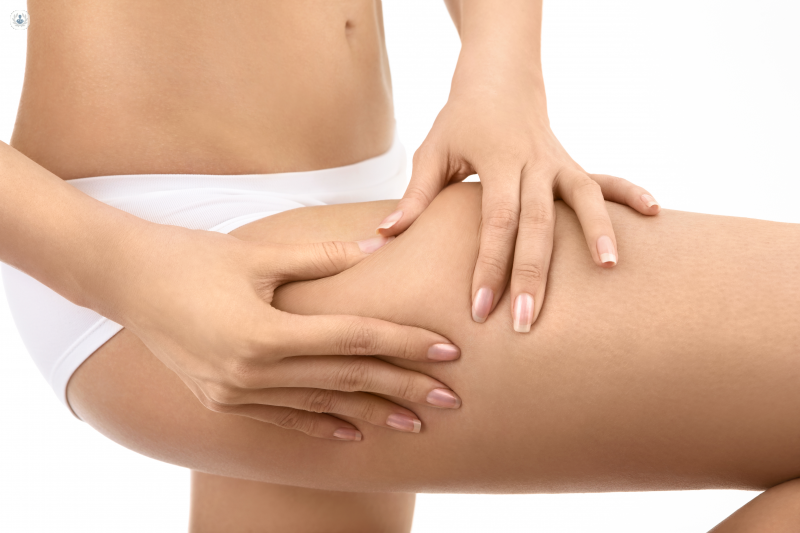Cellulite
Mr Reza Alamouti - Plastic surgery
Created on: 11-02-2015
Updated on: 04-20-2023
Edited by: Jay Staniland
What is cellulite?
Cellulite is characterised by the appearance of lumpy and dimpled skin on the thighs, hips, buttocks and other areas of the body where there are areas of subcutaneous fat – the layer of fat that lies just under the skin. It’s more common in women due to the higher distribution of fat in the female body.
There are three categories of cellulite:
- Hard cellulite : The skin is firm and can be painful when touched.
- Soft cellulite : The skin has a spongey appearance is not painful when touched
- Edematous cellulite : This is among the most complex types of cellulite to treat. This is caused by poor circulation and is aggravated by fluid retention.

Who does cellulite mostly affect?
Cellulite can affect people of any age, but it is more likely to affect us as we age, and is more common in women than men. It is estimated that between 80-90% of women experience cellulite at some point in their lives. Hormonal factors, genetics, lifestyle, and diet may all contribute to the development of cellulite.
How can you recognise the signs of cellulite?
Cellulite is known for dimpled and lumpy areas of skin. It usually occurs in areas with underlying fat deposits, such as the thighs, hips, buttocks, and abdomen. The severity of the cellulite affects if the cellulite is visible all the time or only when pinching the skin.
Cellulite can range in severity from mild to severe and may be classified into different grades based on the visibility and depth of the dimples. The Nürnberger-Müller scale is often used, which has four stages:
- Stage 0: No dimpling, even when the skin is pinched.
- Stage 1: No dimpling while standing or lying down, but visible when the skin is pinched or compressed.
- Stage 2: Dimpling is visible when standing, but not when lying down.
- Stage 3: Dimpling is visible both when standing and lying down.
What causes cellulite?
The exact cause of cellulite is unknown. Cellulite appears to be caused by the relationship between the connective tissues in the skin and the subcutaneous fat . When fat cells protrude into the layer of skin, this creates the well-known bumpy and dimpled look of cellulite.
Some factors that contribute to the likelihood of developing cellulite include:
- age (the skin loses elasticity over time)
- being female
- genetic causes
- diet
- being overweight (though it can also occur in people who aren’t overweight)
- having low muscle tone
- pregnancy
- frequently sitting or standing still for long periods
- smoking
Can cellulite be prevented?
In general, it’s important to maintain circulation in the areas of the body with higher fat distributions (buttocks, thighs, hips, arms). This can be done via exercise or movement wherever possible, so if you have a job that requires sitting or standing still for a long time, find reasons to move. You can also frequently massage the areas, which can help to reduce the occurence of cellulite.
Furthermore, a reduction on the consumption of refined, processed and artificial foods – these foods are high in fat and sugar which are believed to contribute to cellulite.
Treatment for cellulite
Cosmetic/medical treatments are:
- Cool sculpting (cryolipolysis)
- Manual lymphatic drainage massage
- Radiofrequency
- Mesotherapy
- Ozone therapy
- Liposuction
- Liposculpture
Cellulite treatments should be combined with a healthy diet and regular physical exercise.
Which specialist treats cellulite?
Dermatologists specialise in skin disorders, including cellulite. Many plastic /cosmetic surgeons also provide treatment options for cellulite.


